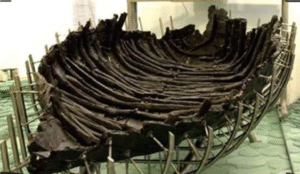Ancient ‘Jesus Boat’ Unearthed in Israel Sheds Light on Daily Life During Biblical Times

Nearly four decades ago, an astonishing archaeological discovery captivated both scholars and believers: a 2,000-year-old fishing boat unearthed from the muddy shores of the Sea of Galilee. Dubbed the “Jesus Boat,” this ancient vessel offers a rare, tangible link to the era in which Jesus Christ is believed to have lived and taught, opening a window into the daily life and craftsmanship of the 1st century.
The boat’s discovery in 1986 was anything but ordinary. A prolonged drought had lowered the water levels of the Sea of Galilee, revealing patches of the lakebed that were normally hidden. Brothers Moshe and Yuval Lufan, both amateur archaeologists from a nearby kibbutz, stumbled upon the outline of a submerged boat buried deep in the mud. Recognizing the potential significance of their find, they promptly contacted the Israel Antiquities Authority.

What followed was a race against time. Once word got out about the find, archaeologists worked tirelessly for 12 straight days and nights to excavate the fragile boat without causing it to collapse. Preserved by the oxygen-free mud, the boat had survived centuries beneath the surface but required extreme delicacy during recovery. Layers of silt were peeled away carefully, revealing a flat-bottomed, 27-foot-long and 7.5-foot-wide vessel.
Experts say the size and construction of the boat match the types commonly used for fishing on the Sea of Galilee during the time of Jesus. While there’s no concrete evidence to confirm that Jesus or his disciples ever used this specific boat, its age and style are consistent with the kinds of vessels referenced in the Gospels.
The Sea of Galilee, also known as Lake Tiberias or Lake Kinneret, features prominently in Christian scripture. Jesus is said to have calmed a storm there, walked on its waters, and called several of his disciples—many of whom were fishermen—from its shores. The boat discovery, therefore, is more than just a relic; it represents the material culture of a transformative time in religious history.
